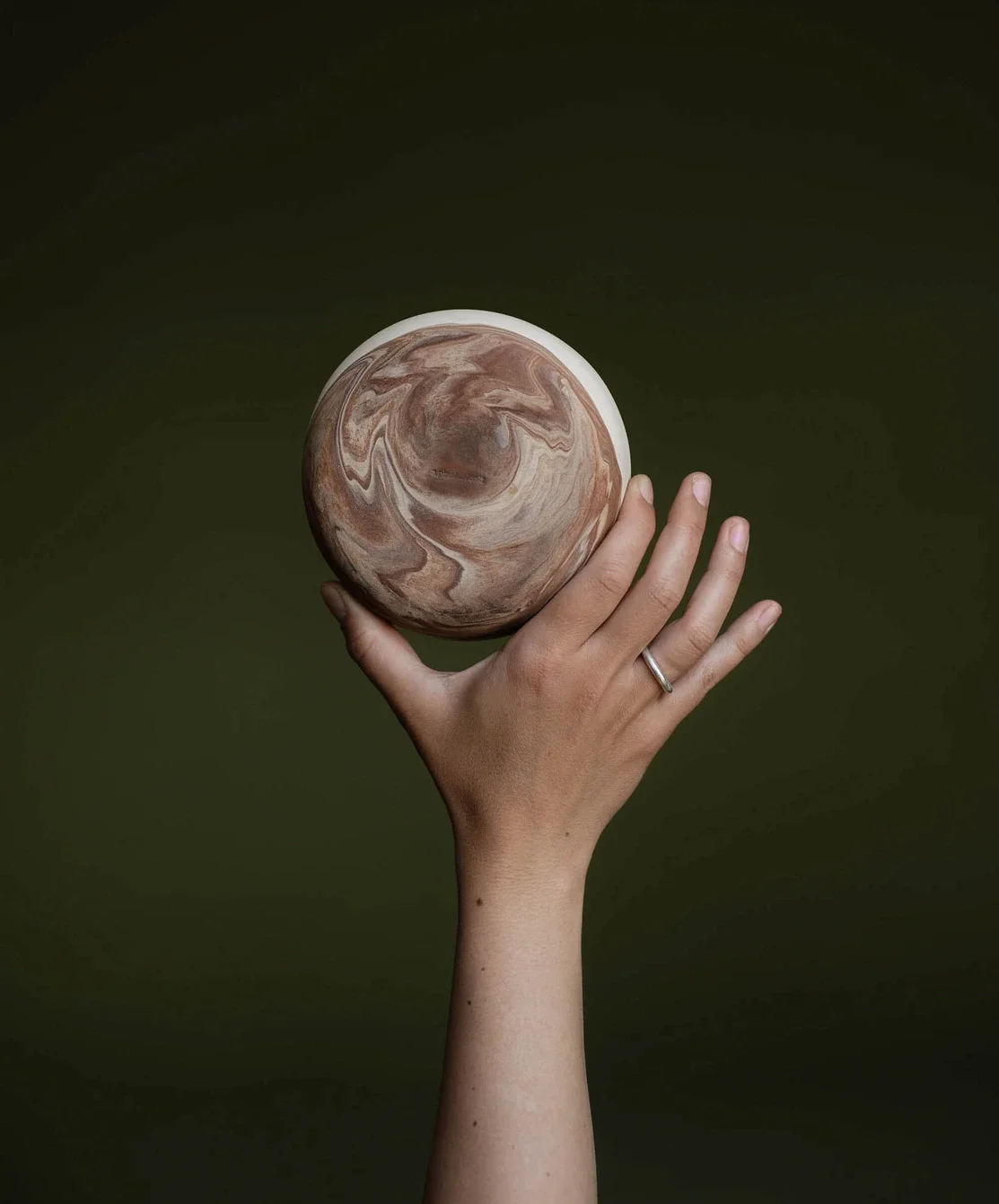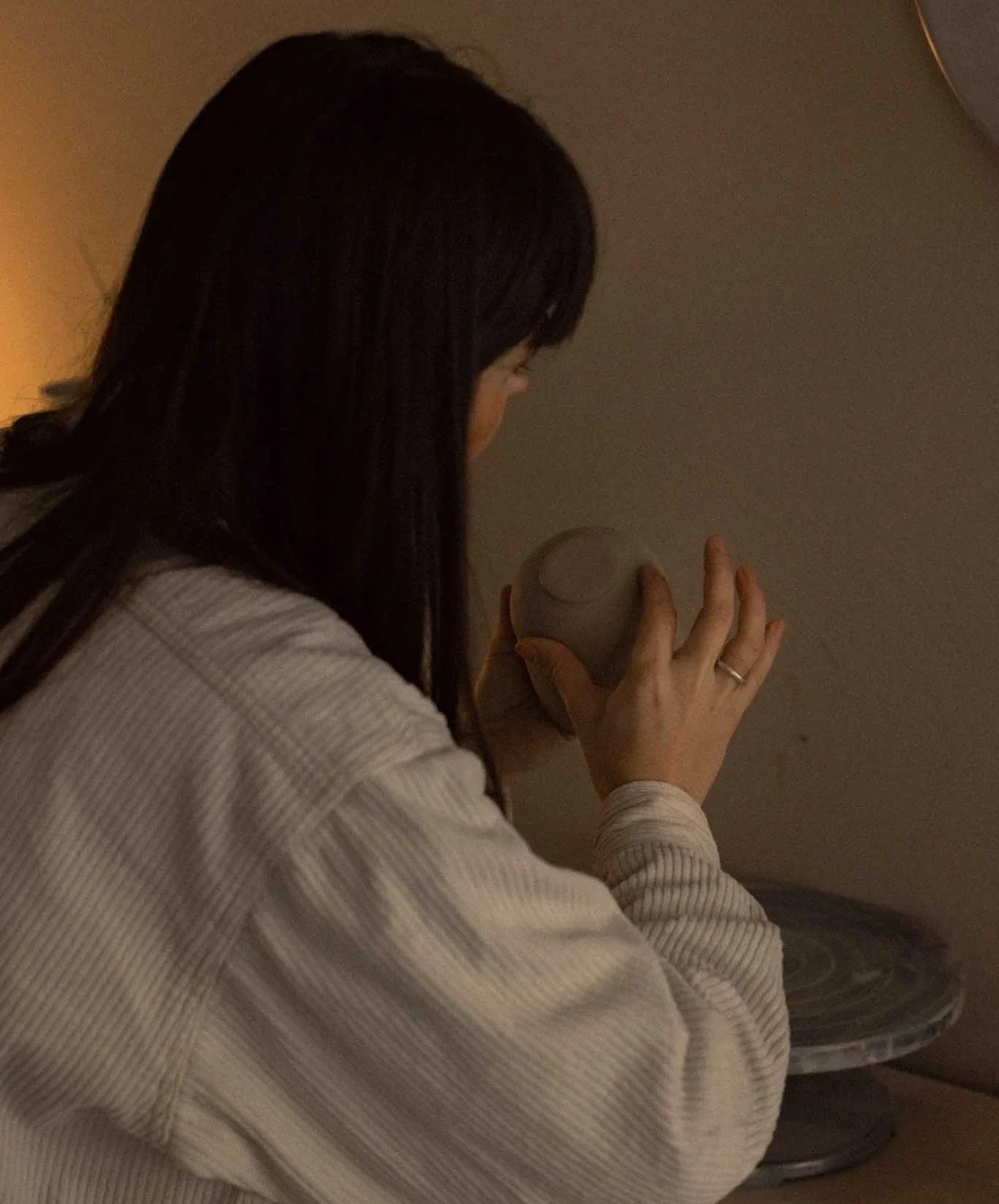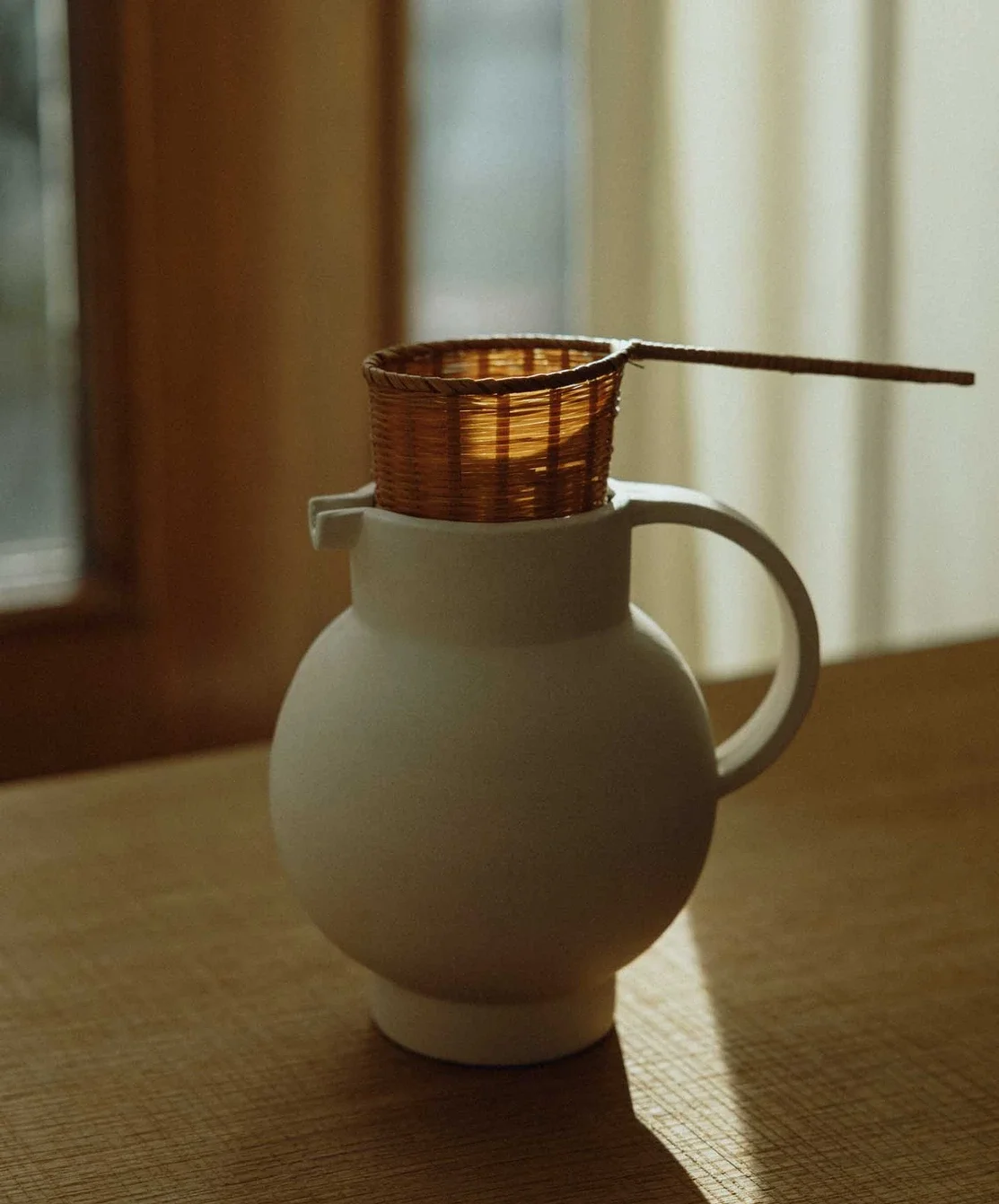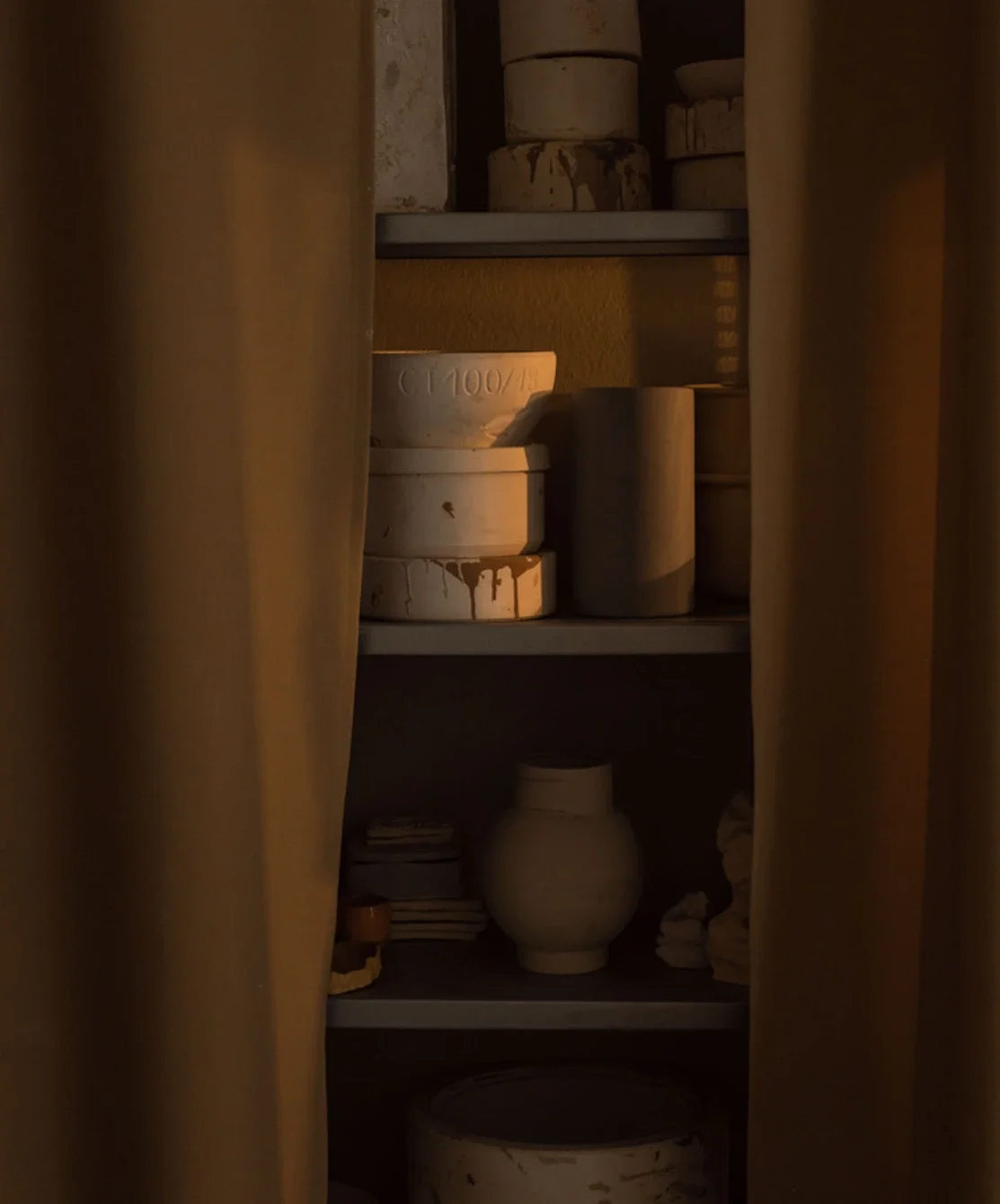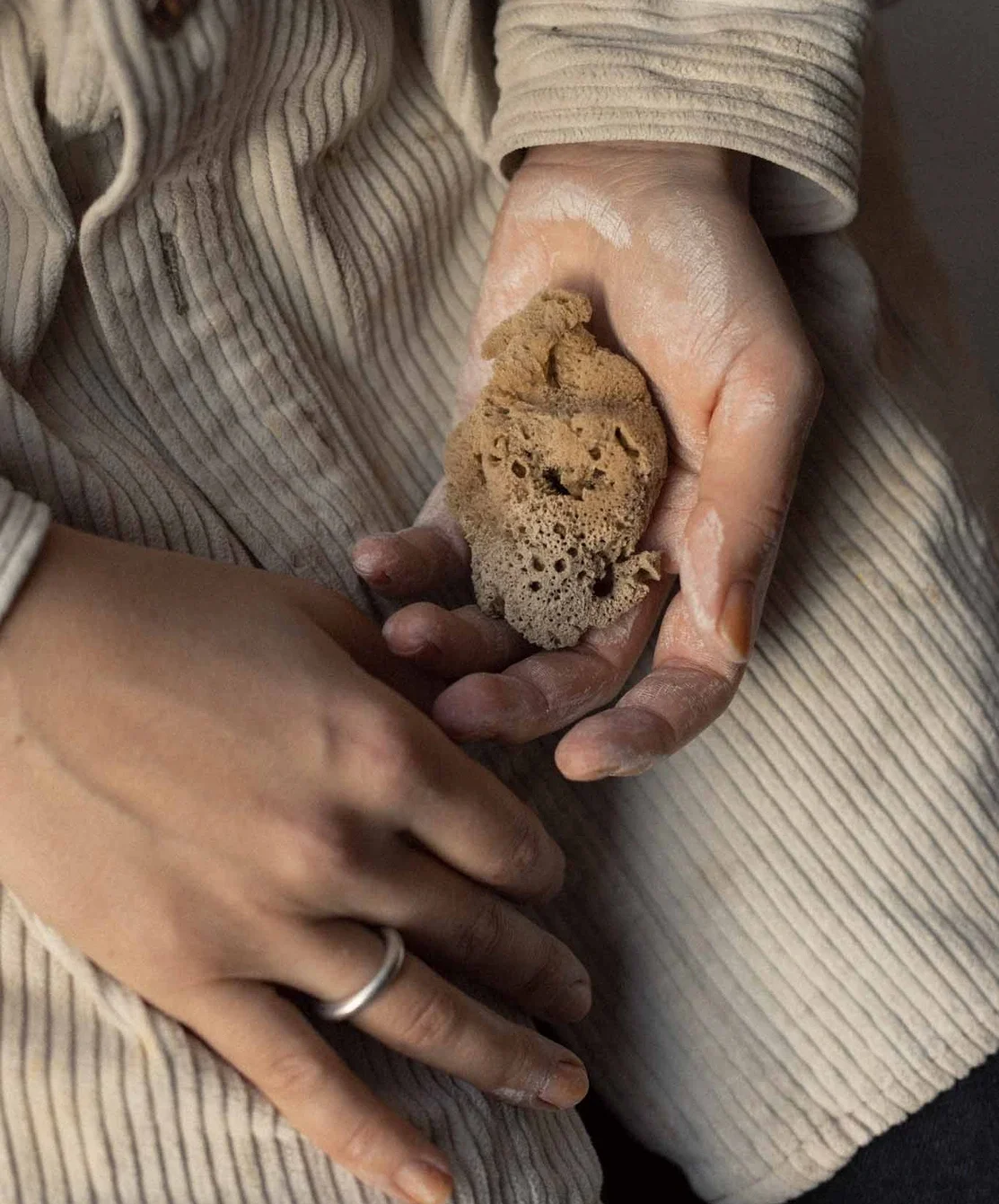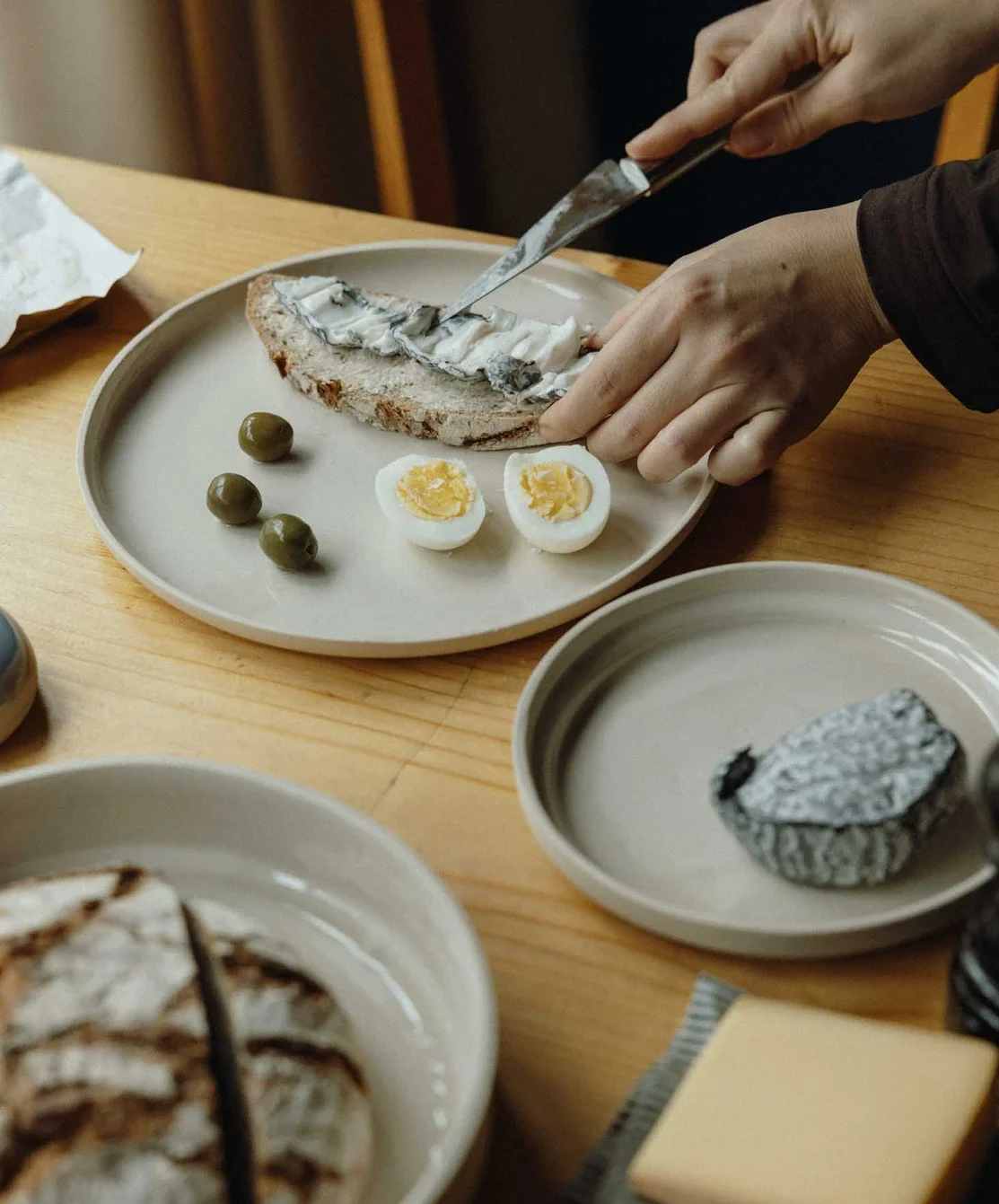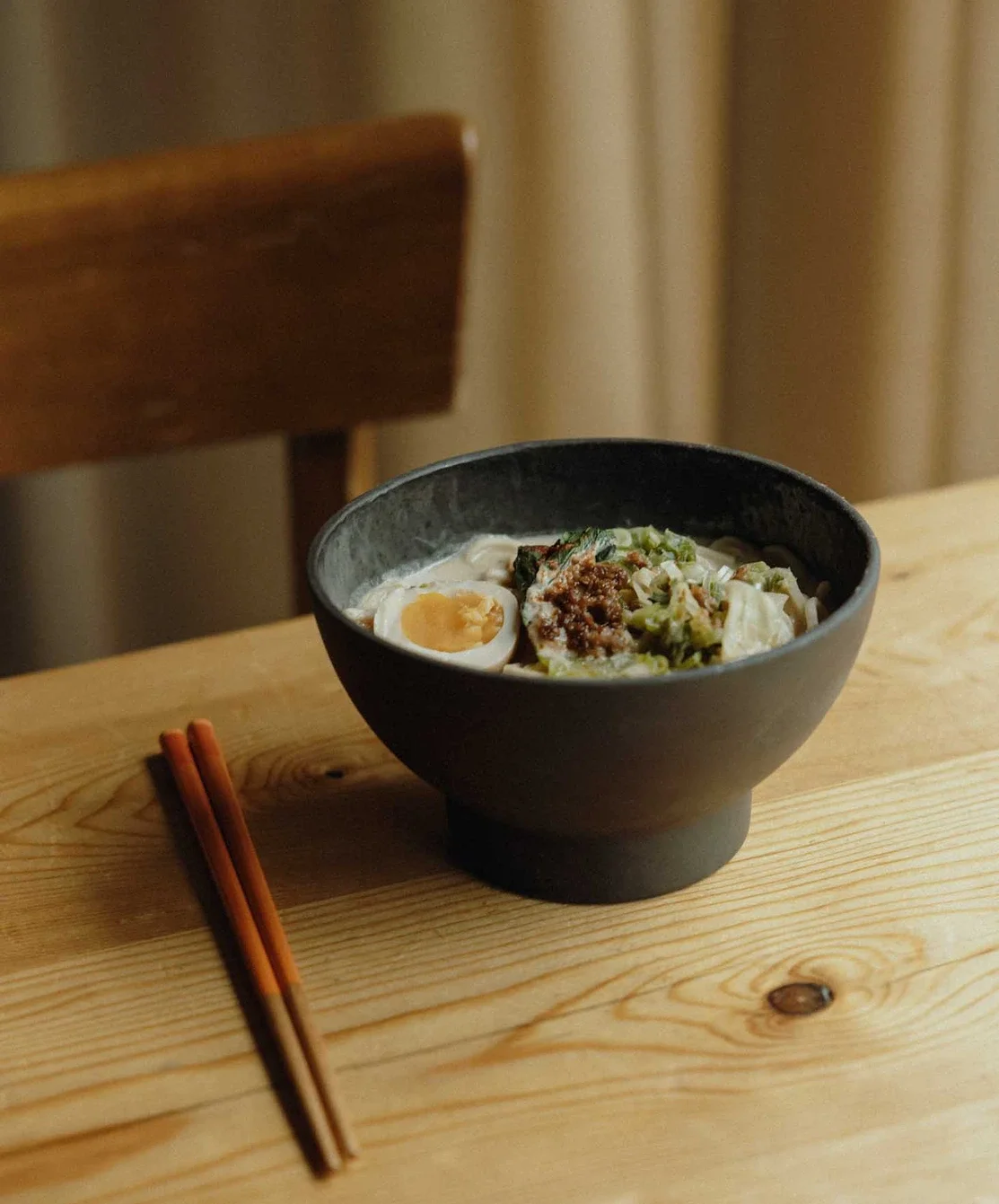Tamara Pešić
Please tell us a bit about yourself.
I’m Tamara, a designer and ceramicist based in Frankfurt in Germany, working in the fields of food, craft and design—from designing tools and objects for the table (mostly) to edible installations and eating experiences (occasionally). The broad spectrum of food has always sparked my curiosity, considering its background, meanings, and traditions. My ceramic–based project »a pinch of salt« is dedicated to the ways we bring food to our tables, from the objects, tools, and vessels we use to prepare, store, preserve and arrange food to rituals of sharing and togetherness. Food touches on many aspects of our lives, it reflects cultural aspects and can help us grasp how we connect with the world around us, the relationships we form with our community, environment, and ourselves, in a broader context.
How did you become a ceramist?
I always liked to work with my hands and explore the palette of different materials and their inherent qualities and textures. I remember how fascinated I was as a kid by the small objects and inventions that my uncle had crafted. He would keep them in a small shoe box which felt like a whole world of its own to me, full of ideas that tried to improve simple things that we use in our everyday lives.
10 years ago I started to study design and at some point had the chance to do a semester in Japan where I was introduced to a small ceramic school and started going there on a weekly basis. The communication was solely based on our hands which was challenging in the beginning but I learned a lot and enjoyed working in this special atmosphere. On the weekends I would try to visit some of the traditional pottery villages like the ones in Onta, Arita and Karatsu which were quite impressive, humbling and inspiring.
Back home I finished my design studies with the project “Vice Versa–Reflections on the Essence of Materials” in which I wanted to dive deeper into the characteristics of materials I selected, and approached different ways to grasp their inherent qualities, what they were communicating to me and what was so unique about them, from the warmth and textures of wood and textiles to the fluidity of glass to the moment it crystallises and becomes still, and the grounding nature of clay that can be shaped in seemingly infinite ways. After my studies I went to work in Copenhagen for half a year and when I came back the pandemic hit. Maybe not the best time to decide to become self-employed and do this full-time but I somehow had to take the risk and follow my intuition.
Were there any mentors or other practitioners that were early inspirations for you?
In the early stages I did not seek for outer inspiration so much. However, I was naturally influenced by everything that surrounded me, especially during the time in Japan where I started to practice and was absorbing different grounds. I would bike 80 km to visit one of Tadao Ando’s creations, whose radical and spiritual approach I find touching. I also admire the work of Toshiko Takaezu, an artist and ceramicist who saw her practice as an outgrowing of nature that was fully interconnected and related with everything else in her life. She once said: “I see no difference between making pots, cooking, and growing vegetables.” And I fully feel that. In general I find most inspiration outside, by observing, listening, cooking, reading, or just experimenting.
Can you share a bit about your process?
Depending on the kind of day, mood, and focus my process can be everything from intuitive and fluid to sometimes the opposite and become quite technical. I like to start the day slow, with a coffee, and without thinking all too much about the result, since it can at times get quite stressful in the studio I need these quiet moments for myself. I think my process is quite influenced by my studies in design, it can sometimes take a while (months to even years) from my initial idea to the final object. But doing different things in between like going to the market, cooking, preserving, and spending time outside, just wandering have always been an important part where new thoughts can grow from. Sometimes the best ideas are developed from a distance, away from the studio, by changing the surrounding to let new impressions in and come back with a refreshed mind and energy to begin, again.
Clay acts differently at each stage of its drying journey and can be considered a challenging material to work with. How do you achieve, or at least get closer, to become less attached to the final result of a piece?
Working with ceramics can be quite frustrating at times but overcoming the difficulties each time feels rewarding and fulfilling (mostly). In the end it is really about listening to the material and learning to let go: letting go of trying to control the process all too much, and being open to different outcomes, especially when experimenting with new shapes, recipes and glazes. It really is about finding the right balance and what works and feels best for you and you definitely need to practice patience. When I finish producing my collection pieces I give myself the time and space to try out new things without having in mind a final result, just do what I feel like in that moment, but this also only works when I feel financially stable enough to do so.
We know that you run private ceramics hand-building workshops. Could you tell us more about your teaching approach and your early motivation to teach?
I give handbuilding and wheel workshops in the studio and teach ceramics at a local school once a week. Especially for students and kids I find it important to give them the resources to do something apart from the daily pressure to perform, to really just get the time and space to create, without being judged for what they made or think about grades all the time. I enjoy the direct contact and handing over knowledge and skills as good as I can. In my wheel workshops in the studio for example I only do small sessions with one to two people where we can focus solely on the material, how it feels and changes under the gentle guidance of the hand, how it shapes and transforms into something new, something your own that you can keep and that will last for a long time. I find this truly beautiful. And it makes me grateful and happy to see how thankful and refreshed people leave, for being able to dive into something different, feel and enjoy the atmosphere, away from the heaviness that everyday life sometimes can bring.
Tell us more about your love for food and how we can develop a more responsible food culture.
There are few things in life that give me more joy than food prepared with love and enjoyed with the people I love. Food is so powerful, and it has always been an integral part of human cultures, especially in terms of community, care and heritage. It has the power to bring us back to a different place and time. At the table we can come together, share stories or recipes or simply be present and enjoy. Since I can remember, I have wanted to dig deeper into the context and history of the ingredients that were available to me or sparked my interest.
The way to a more responsible food culture is a rocky one and a quite complex political matter. And even though tackling the challenges can not be passed on to individuals only in a system that is based on exploitation and endless economic growth I do believe that we should all take responsibility for our choices, causing as little harm to our planet as possible. In Agriculture we can clearly see the multitude and spectrum of the environmental problems we are facing. Of course we can (and should) support farmers and gardeners with their fresh, local and seasonal produce that is not only healthy for us but also good for the soil and environment. We should be mindful with what we consume, for example with plant-based foods that minimize land and water use, greenhouse emissions, and prevent food waste as good as we can. We can support organizations that work towards more responsible food practices, no matter if local or global. But all this is an educational question and matter of access to food and land. Fresh and healthy foods shouldn’t be more expensive than processed foods, (instead of sugar and meat) they should be subsidized, accessible and affordable to each and everyone.
And even though I do believe in change and refuse to give up hope this change needs to happen on a much bigger scale. We are already facing catastrophic consequences in terms of global climate change that we must counteract with real political actions.
Where do you think lies the most significant potential to preserve important local crafts and traditions?
Preserving local craft expertise is so important. Most crafts are based on sustainable production methods that use less energy, fewer resources and aim for quality, durability and responsibility, with the least possible harm to our environment. And they can teach you valuable skills, patience, creative expression and persistence. But they need to be seen, valued and understood in order to survive and thrive again. And that’s not so easy. I work together with a local manufacture for one product from my collection, my big fermentation pots, because they are way too heavy for me to produce them on my own and take all of my kiln space. It took a long time to find the right partner, many of them have closed for good in the meantime and most of the remaining ones still work very old-fashioned and didn’t reflect what I was going for. And here I find the role of design important: to bring new thoughts and ideas to the field, to prevent age-old manufactures from dying out and find new solutions if we want to keep these valuable crafts alive and pass them on to future generations.
What upcoming projects make you excited right now?
I am working on an edition with an illustrator and very excited about that! We started last year in spring, but so many things came in between in both our lives so we are taking our time, with everyone working on their own projects until the time feels right to put it out. I am also planning an event series about money together with two friends from Nea Kosma (@nea_kosma), who are doing such an important work in terms of guiding through finance–related questions and providing tools that can make your work life easier and more structured. Money is such a loaded topic that we should all talk about it more freely and shamelessly.
Our aim is to create a space for exchange, to share experiences and knowledge, bring more transparency and awareness to the topic with the possibility to talk about everything from feelings of fear, shame and trauma, to exploitation and discrimination in our system and what to do against these in order to achieve communal wealth, growth, and support.
Where and how can people engage more with your work?
I am sharing notes on food, recipes, and resources on my website apinchofsalt.de. For those who are too far away I give insights on Instagram @apinchofsalt.off and for those who are nearby and would like to visit, my studio is open by appointment. I am also part of the Keramik Kiosk collective, together with 7 other ceramicists we are self-organizing exhibitions and selling our work in different locations every few months, since 2021. Collective collaboration and gathering can be a very fruitful and important base for exchange, empowerment, and support. You can check our upcoming dates on keramikkiosk.de.
Photos belong to @sinahosner and @ulrikemeutzner


